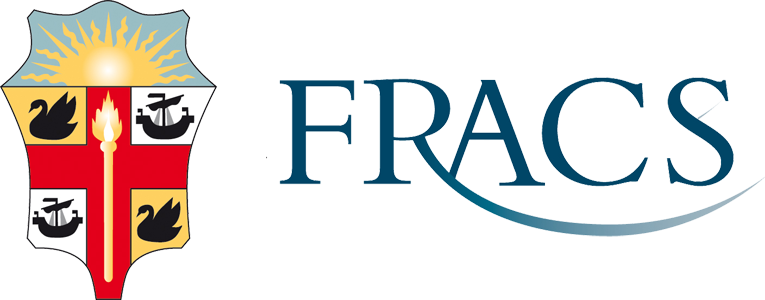Lateral Lumbar Interbody Fusion
What is Lateral Lumbar Interbody Fusion?
- Lateral - Side
- Lumbar - Lower back
- Interbody - Between vertebrae
- Fusion - Joining together of vertebrae
The Lateral Lumbar Interbody (LLIF) procedure is a minimally invasive keyhole approach to perform thoracic and lumbar interbody fusions. The LLIF procedure is a newer alternative to the more traditional anterior (from the front) and posterior (from the back) lumbar interbody fusions.
The LLIF procedure permits the distraction of narrowed disc spaces, decompression of nerves, relief of pain and correction of deformities. The keyhole minimally invasive approach reduces postoperative pain, reduces blood loss, minimises scarring, shortens hospital stay and provides more rapid recovery from surgery. Additionally, the LLIF approach avoids scar tissue if a patient has had previous abdominal surgery or anterior or posterior spinal operations.
Who is Suitable for Lateral Lumbar Interbody Fusion?
Lateral Lumbar Interbody Fusion is suitable for people with the following conditions:
- Degenerative Disc Disease
- Spondylolisthesis
- Spinal Instability
- Lumbar Stenosis
- Failed Back Surgery Syndrome (FBSS)
- Disc Herniation
Benefits of Lateral Lumbar Interbody Fusion
- Minimally Invasive Approach: LLIF is a minimally invasive procedure requiring smaller incisions than traditional open surgeries. This leads to less tissue damage, reduced blood loss, and quicker recovery times.
- Preservation of Spinal Muscles: The LLIF approach allows the surgeon to access the spine through the side, avoiding cutting or detaching the back muscles. This preservation of muscles may lead to less postoperative pain and a faster return to normal activities.
- Reduced Nerve Injury Risk: The lateral approach provides a clear path to the disc space while minimising the risk of damaging nerves that may occur in other approaches.
- Enhanced Spinal Stability: By fusing the affected vertebrae, LLIF helps stabilise the spine, reducing pain caused by motion between the vertebrae.
- Restoration of Disc Height: Replacing the damaged disc with a bone graft or cage helps restore disc height, potentially relieving pressure on nerves and reducing pain.
- Potential for Faster Recovery: Due to the minimally invasive nature of the surgery, patients may experience a shorter hospital stay and quicker recovery than traditional open spine surgeries.
Alternative Options to Lateral Lumbar Interbody Fusion
- Anterior Lumbar Interbody Fusion (ALIF)
- Posterior Lumbar Interbody Fusion (PLIF) or Transforaminal Lumbar Interbody Fusion (TLIF)
- Non-Surgical Treatments
- Dynamic Stabilization Devices
What to do Before a Lateral Lumbar Interbody Fusion?
Tell Mr Malham about any medical conditions or previous operations. Suppose you have a medical condition such as diabetes, heart problems, high blood pressure or asthma. In that case, Mr Malham may arrange for a specialist physician to see you for a pre-operative assessment and medical care following the neurosurgery.
Inform Mr Malham of the medication you are taking and/or have allergies to medications. You must stop using the following ten days pre-operatively:
- Aspirin
- Plavix
- Isocover
- Asasantin
You must stop using blood thinning medication (such as Warfarin) 3-5 days pre-operatively.
Preoperative Investigations will include:
- MRI lumbar spine scan to assess damage/disease to intervertebral discs (shock absorbers between the vertebrae) and any nerve compression
- CT lumbar spine scan to assess bone anatomy of vertebrae, facet joints and any spine deformity
- Flexion extension and lateral bending X-rays to exclude instability (abnormal movement of the spine)
- Bone scan to identify any “hot spots” in facet joints or between vertebrae indicating painful joints
- DEXA (bone density) scan to exclude osteoporosis
- Preoperative and postoperative physicians care if a patient has medical conditions such as high blood pressure, heart and lung disease, or diabetes.
Lateral Lumbar Interbody Fusion Procedure
The LLIF procedure is performed with the patient positioned usually on their right side, with the operating table slightly flexed to open up the space between the lower 12th rib and the iliac crest (hip bone). Then an image intensifier (intraoperative x-ray) is taken to visualise the exact location of the damaged/diseased disc level.
A small incision is made on the right side to allow a small dilator tube to be inserted through the muscles down to the spine.
The larger tube dilators are inserted over the guidance dilator, safely separating the side muscle over the spine (the psoas muscle flexing the hip). Using image intensifier guidance and nerve monitoring permits the tubes to be inserted into the spine, minimising the risk of any nerve damage/bruising to any nerves. With the tubes in place, a keyhole retractor is placed over them, locked in position to the surgical table and opened to provide keyhole visibility and instrument access to the disc space.
With the intervertebral disc visible, Mr Malham can safely remove the disc, decompress any nerves, and remove disc prolapses and boney narrowing/compression. Any deformity in the sagittal (front/back) or coronal (sideways) plane can be corrected with safe, careful distraction (separation) of the damaged disc level.
Then a new replacement disc made of PEEK (Poly Ether Ether Ketone; a space-age plastic) or titanium expandable cage, filled with artificial bone (bone morphogenic protein, BMP-2 Infuse) to avoid harvesting of iliac crest hip bone, is then inserted into the exposed, empty disc space to restore proper disc height and support the loads on that spine segment. The cage may be fixed with a titanium lateral plate and screws to the above and below vertebrae. Once the new cage (replacement disc) is in position and confirmed by the image intensifier, the retractor is closed and slowly and safely removed, allowing the separated muscles of the patient’s side to return to their normal position.
Final check x-rays are taken.
The one (or two) small skin incision is then closed in three layers with dissolvable sutures in the skin, and a wound dressing is applied.
What to Expect After a Lateral Lumbar Interbody Fusion?
- The patient is gently mobilised with the physiotherapist the following day (post-operative).
- Patients can sit, stand or walk for no more than 30 minutes, maintaining a straight back and avoiding bending/twisting activities.
- Mr Malham will assess your progress on the ward. A postoperative CT Lumbar Spine Scan is taken on days 2-3 to assess the cage position and whether a second stage posterior instrumented fusion to stabilise the spine is required. This will have been discussed before any surgery. If the LLIF procedure was performed for deformity or instability (abnormal movement) of the spine, then a second stage posterior screw/rod fixation will be undertaken to reinforce the spine. Suppose the LLIF procedure has been performed for spinal narrowing (stenosis) or nerve root compression. In that case, it may need to be augmented with a second-stage laminectomy with posterior instrumented fusion if leg pain persists on a walking test.
- A customised Low-Taylor Lumbar Corset Brace may be fitted to wear for back support for 12 weeks (only when out of bed).
- Car travel as a passenger only until postoperative review, approximately 4-6 weeks following discharge from the hospital.
- Return to car driving, initially for local distance driving six weeks post-operatively. Maintain a straight back and bend your knees for six weeks post-operatively.
- No heavy lifting of greater than 5 kilograms for six weeks.
- Mr Malham may organise for post-operative inpatient rehabilitation to optimise recovery if needed.
Lateral Lumbar Interbody Fusion Prognosis
LLIF has been shown to be an effective surgical option for stabilising the spine and reducing pain in many cases.
Lateral Lumbar Interbody Fusion Risks
The specific risk of this procedure with the lateral keyhole approach is possible damage to the psoas muscle or surrounding structures, including the bowel and lumbar plexus nerves. Hence the main risk with the LLIF procedure is weakness, numbness and a burning sensation affecting the front of the right thigh, which is usually temporary and improves over 2-3 weeks. The risk is reduced by using nerve monitoring performed during the procedure. However, despite the utmost care, the patient may experience pain/numbness, and this should be notified to Mr Malham, who will treat the symptoms with steroid tablets or injection, nerve-dampening tablets called Lyrica or pain medication Endone/Oxycontin.
General risks of surgery and general anaesthetic are approximately 3% and include infection, bleeding, drug allergy, heart attack, stroke, DVT/PE, urinary tract infection and pneumonia.
What if Lateral Lumbar Interbody Fusion is Delayed?
If LLIF is recommended by a neurosurgeon and deemed necessary for addressing spinal instability or reducing pain, delaying the procedure may lead to prolonged suffering and potential worsening of the condition.
Delaying surgery could result in ongoing pain, reduced mobility, and decreased quality of life. Additionally, some spinal conditions may progress over time, potentially making the surgical procedure more complex if postponed.



